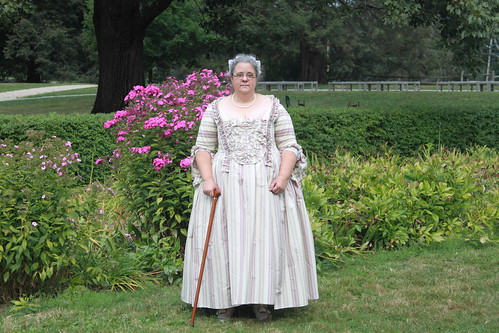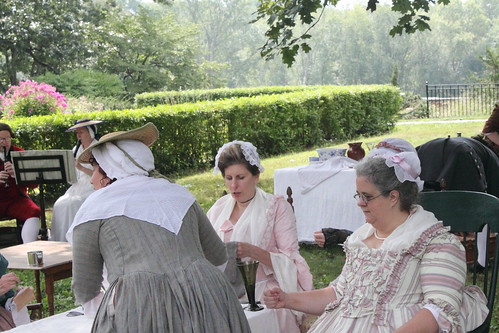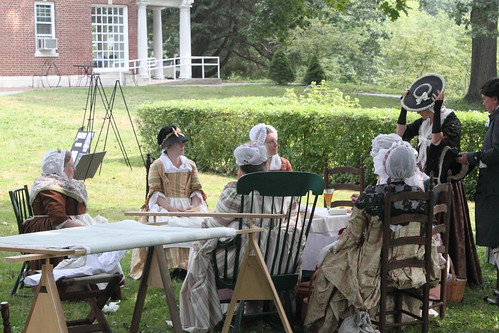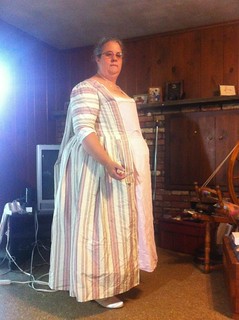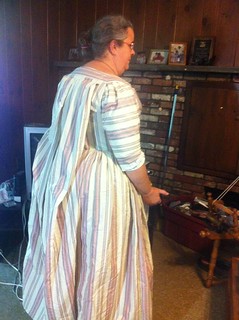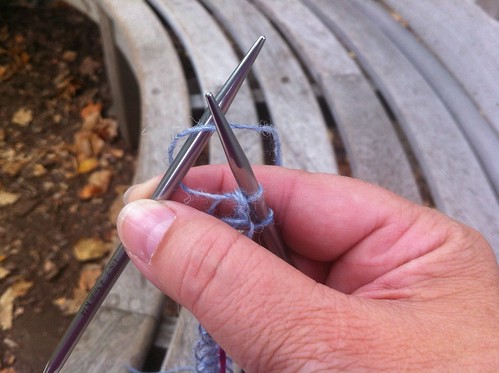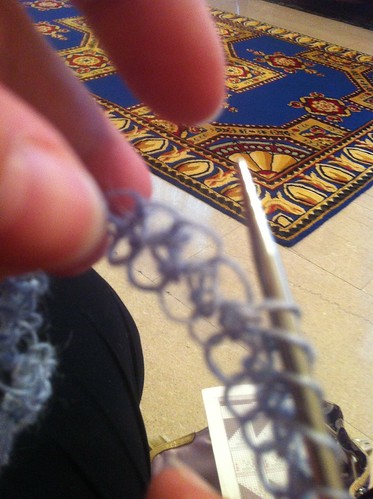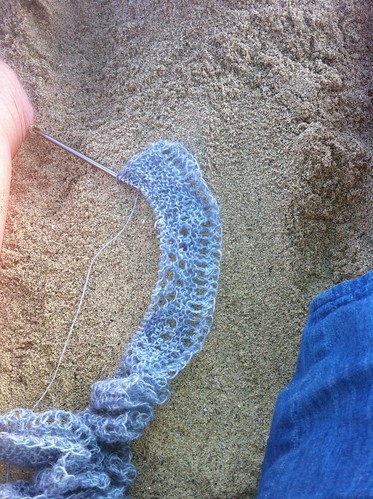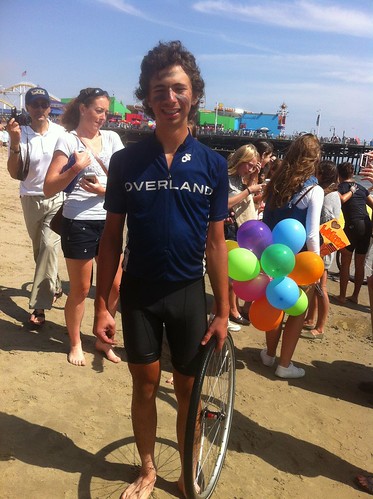It is more of a challenge to document a woman wearing glasses in the 18th C. It appears that most women having their portraits paintings were vain enough to not wear their glasses, if they had them. It's pretty hard to tell if they used glasses at all!
There are a few paintings depicting women in glasses, though.
Here is the
Countess of Stolberg-Gedern, by Lippol. Not American, but well off. And not the kind of glasses that seem to be most common.
This is
Madame Crozat, Aved, holding her glasses. But, it's French, 1741 So, not so great.
Here is a servant woman, in glasses, in
High Life Below Stairs, by Collet, 1763. Closer, it's England, but a servant woman, not a well off American in silk.
This
woman seems to be an artist, painting herself, Anna Dorothea Therbusch, in 1777, but it doesn't seem to be English.
My Daughter Anne, by Walpole, is a satire, I think, 1779. It shows a neatly dressed mother, horrified by her daughter, and the mother is wearing glasses. Now, this could be to show how dowdy mom is compared to her over-the-top dressing daughter, but in order to suggest that glasses make a woman dowdy, that means that some must have worn them, and put up with the dowdiness. That is fine with me, I need the glasses and will put up with being dowdy! The woman in them is in a very nice, likely silk short clock with trim, so I think she works for me!
Martha Saunders Salisbury,by Gullageris a bit late, 1789, but shows a terrific woman in silk with glasses. But it doesn't really help document them for me, in 1775.
And, for what the spectacles should look like in 1775, Here is
Ben Franklin in his.
Also, from the
Museum of Vision, Spectacles like the originals I found on ebay. Also, From the
American Optometric Association, they have a pair from 1780 just like mine. I had my local independent optician put my bifocal script into these frames. He had to remove the rivets, as undoing the screws didn't allow the lenses to be removed. We have temporarily replaced those rivets with new screws, and, if we discover a safe way to add rivets, we will change them. The loops originally had been wrapped with a dark silk or linen ribbon (I think silk). It was disgusting, and since I'm wearing these, I removed it! Then I cleaned the glasses up to have the lenses installed. They work quite well, but we need to gently adjust them, as they hurt one ear.
edited to add my thanks to Karen Larsdatter, having found many of these sources through the links on her
page on spectacles.
